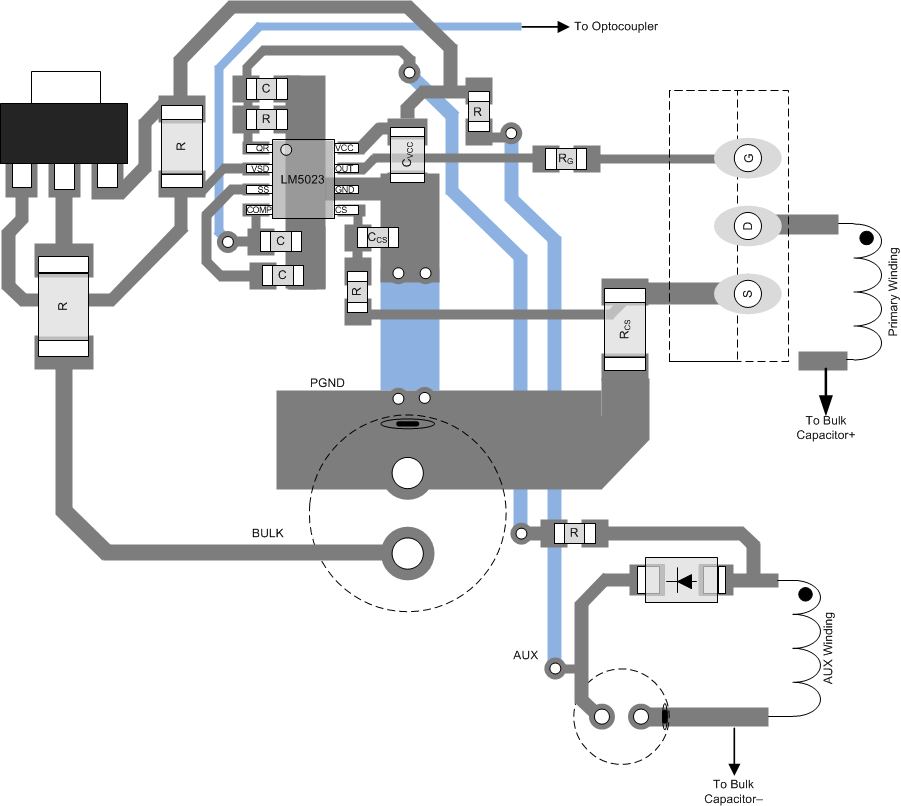SNVS961E APRIL 2013 – January 2016 LM5023
PRODUCTION DATA.
- 1 Features
- 2 Applications
- 3 Description
- 4 Revision History
- 5 Pin Configuration and Functions
- 6 Specifications
-
7 Detailed Description
- 7.1 Overview
- 7.2 Functional Block Diagram
- 7.3 Feature Description
- 7.4 Device Functional Modes
- 8 Application and Implementation
- 9 Power Supply Recommendations
- 10Layout
- 11Device and Documentation Support
- 12Mechanical, Packaging, and Orderable Information
Package Options
Mechanical Data (Package|Pins)
- DGK|8
Thermal pad, mechanical data (Package|Pins)
Orderable Information
10 Layout
10.1 Layout Guidelines
TI recommends all high-current loops be kept as short as possible. Keep all high-current and high-frequency traces away from other traces in the design. If necessary, high-frequency and high-current traces should be perpendicular to signal traces, not parallel to them. It is good practice to shield signal traces with ground traces to help reduce noise pick up. The ground reference for components connected to the signal pins should be a kelvin connection to the VCC bypass capacitor and GND pin. Always consider appropriate clearances between high-voltage nets and low-voltage nets.
10.2 Layout Example
 Figure 24. LM5023 Layout Example
Figure 24. LM5023 Layout Example